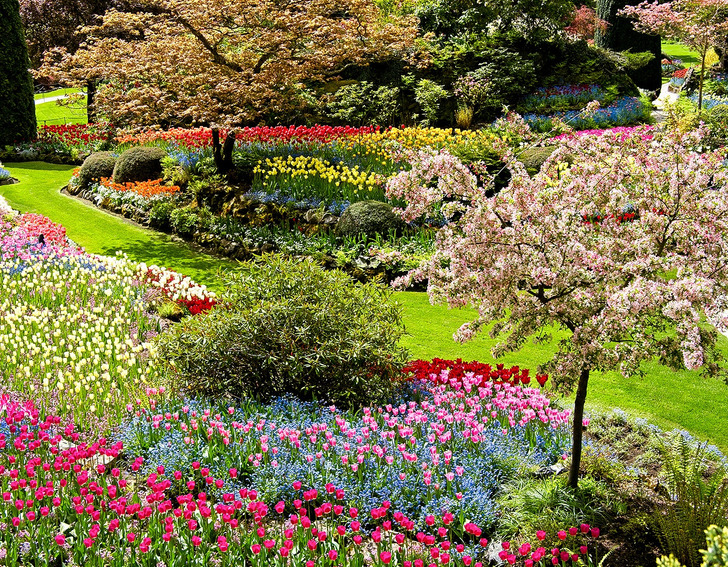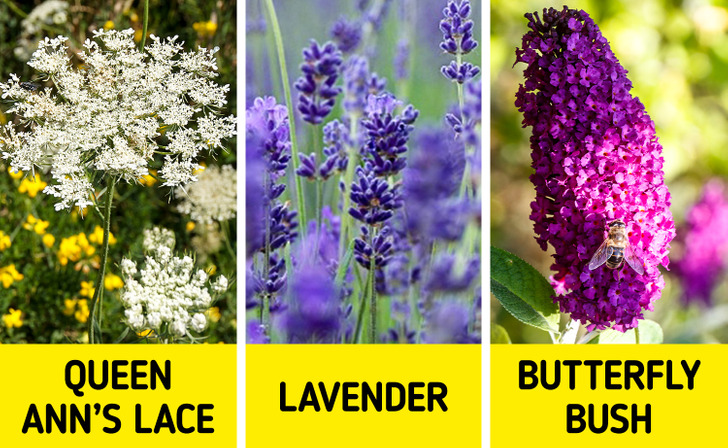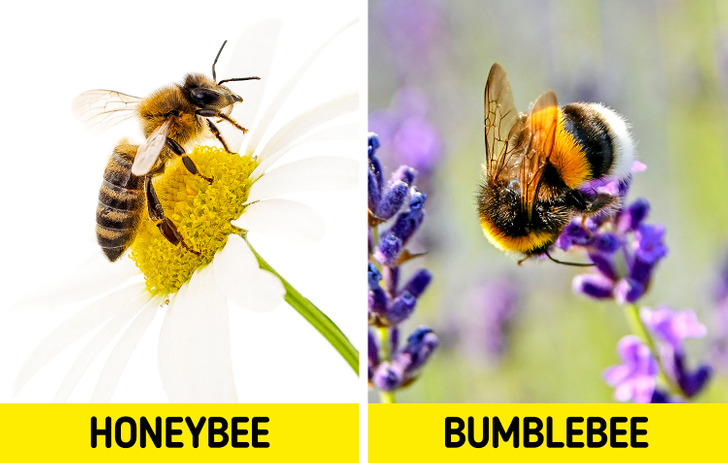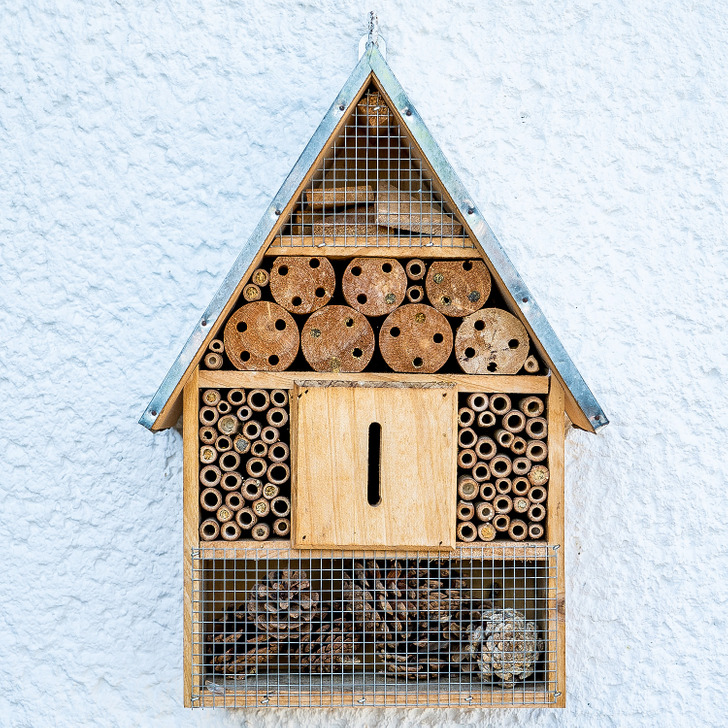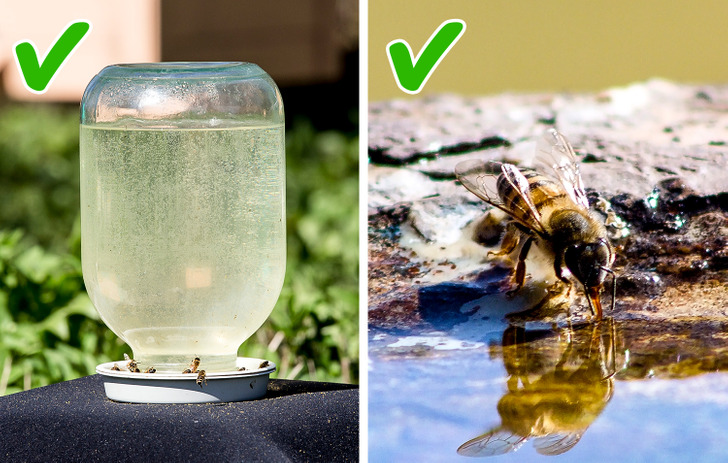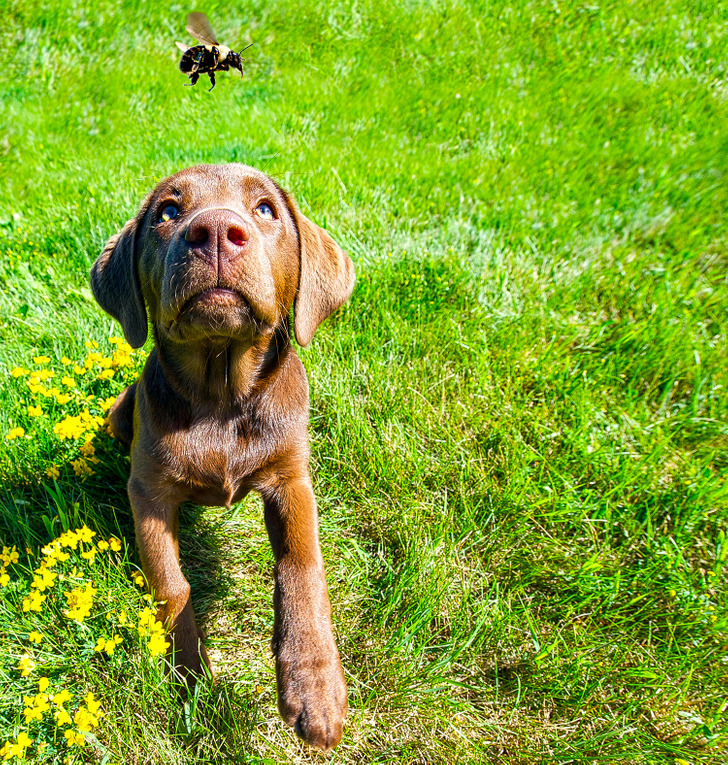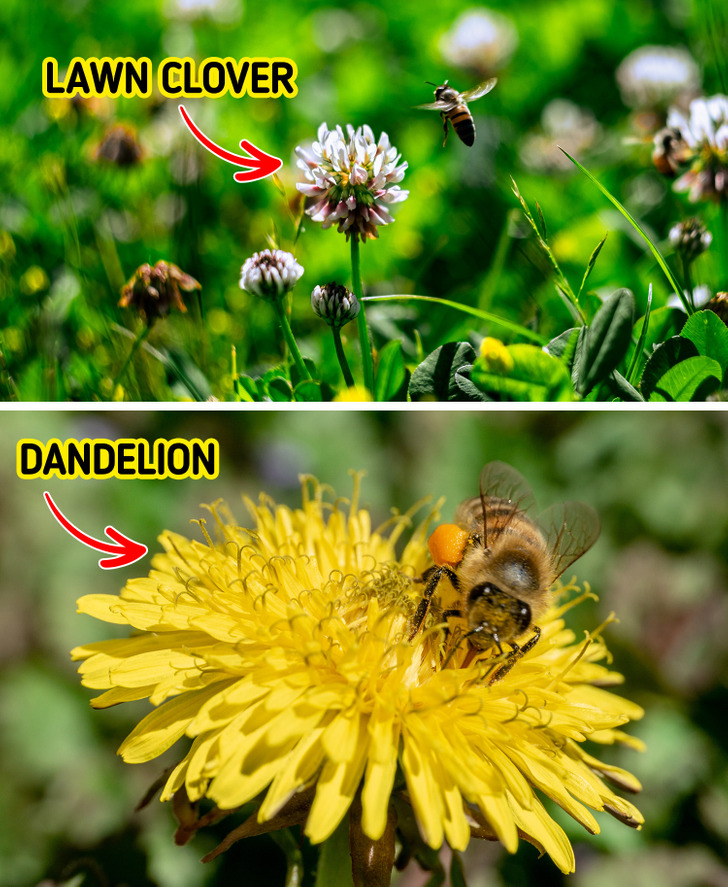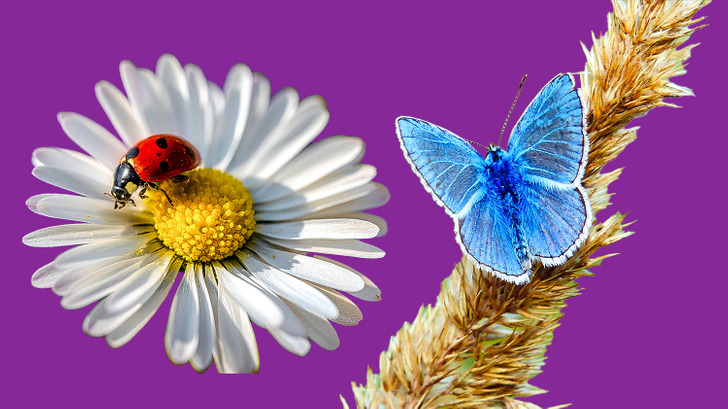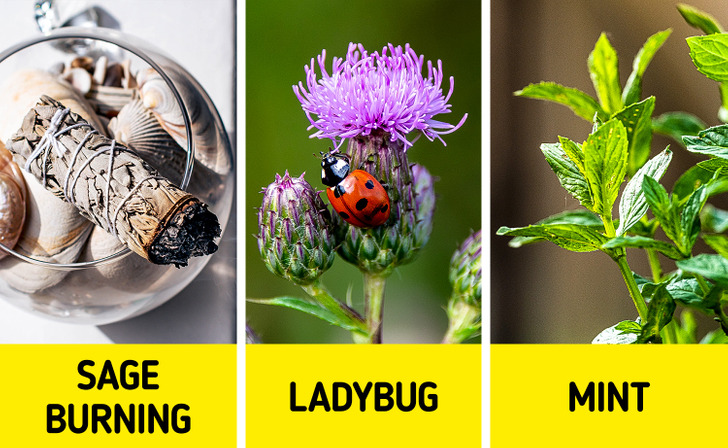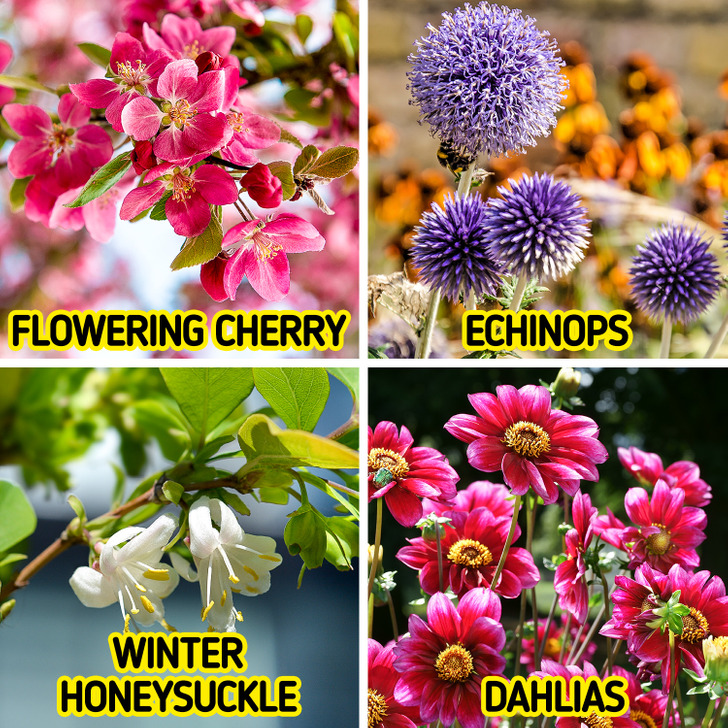How to Attract Bees to Your Garden
Bees are vital for our ecosystems. They carry pollen between plants and provide us with seeds, grains, and fruits through pollination. If they stop pollinating or something happens to them, we may start to lose the fruits and vegetables we consume. 5-Minute Crafts rounded up practical tips to help you attract these essential pollinators to your garden.
1. Pick a bee-friendly spot.
2. Grow plants rich in pollen and nectar.
Bees do most of the pollination of flowers and aid their transformation into fruit. Therefore, you will need to grow:
- Nectar-producing flowers, like the butterfly bush, perennial plants, shrubs, and trees in a full sun position
- Single petal flowers, like Queen Ann’s Lace, wildflowers, and a wide variety of plants with a continuous flowering period all season long
- Certain herbs that attract bees, too, like sweet basil, lavender, fennel, cilantro, thyme, basil, mint, etc.
3. Pick colorful flowers and plants.
Most flowering plants attract bees. Yet, they love blue, purple, yellow, and white flowers the most and plants in different shapes and sizes. Picking the right plant for each bee type is essential. So, it’ll be helpful to get to know the different types of bees and the difference between bumblebees and honeybees so you don’t confuse them with wasps.
- Honeybees are more slender with translucent wings and fewer body hairs than bumblebees. They’re good at communication; they dance to inform other fellow workers when good pollen supplies are found. The honeybee queen, whose lifespan is 3 or more years long, continuously lives in the hive with her offspring.
- Bumblebees are yellow, orange, and black pollinators, working fast and carrying many loads on their large round bodies that have a lot of little hairs. They’re good at learning how to extract pollen from various flowers and adept at cross-pollination, which is essential for fruit trees. The bumblebee queen lives for a year and other members live for a few months.
4. Install bee hotels, boxes, and nests.
Having bee hotels, nests, houses, or bee boxes in your yard is crucial. They generally come with small holes and in different shapes and designs. In preparing their homes upfront, it’ll be good to know when the bees hibernate. The honeybees live in nests in large groups, and solitary bees need their shelters. On the other hand, queen bumblebees hibernate in autumn and early winter and come out in late winter.
5. Provide drinking water and bee baths.
6. Provide a safe environment for them.
When bees land on the flowers on your balcony or garden, don’t get scared and don’t drive them away. Instead, think about giving them a safe, natural habitat. Let them buzz over things or sniff around. If you have pets, make sure that they can’t access the bees because they may frighten them. It’s also essential to educate the children to provide bees with some space and teach them how important bees are to our planet.
7. Go easy with weeds.
Some weeds attract bees immensely and supply pollen and nectar, like lawn clovers and dandelions. Therefore, leaving some of your garden areas untouched, may do the trick when trying to attract bees.
8. Welcome other beneficial bugs to your garden.
When you finally have bees in your garden, remember that it’s normal to see other insects or bugs visiting your yard too, like praying mantis, ladybugs, butterflies, etc. It’s better not to panic but to welcome them instead. Also, keep in mind that many insects aren’t pests. Some are good fruit, flower, and vegetable pollinators, like syrphid flies. Knowing this, you may consider adding native plant species to your garden.
9. Opt for non-toxic pest control methods.
Even small amounts of pesticides may harm bees, and this is the last thing we want. Therefore, do your best to avoid those chemicals and opt for more natural methods. The good news is that you won’t be alone in this — sage burning, ladybugs, and herbs, like mint or rosemary, in your garden, can collaborate with you. Some homemade recipes may also help you combat certain pests.
10. Bee-friendly plants for every season
- Summer: lavender, Agastache, Erysimum Bowles Mauve, scabious, comfrey, foxgloves, cardoon, Echinops
- Autumn: sedums, single-flowered dahlias, Verbena bonariensis, Japanese anemones, autumn asters, Actaea simplex
- Winter: snowdrops, winter aconites, ivy, crocuses, winter honeysuckle, hellebores, mahonia, Clematis cirrhosa
- Spring: flowering cherry, crab apple, hawthorn, bugle, daffodils, pulmonaria, sea thrift, alliums, grape hyacinth
